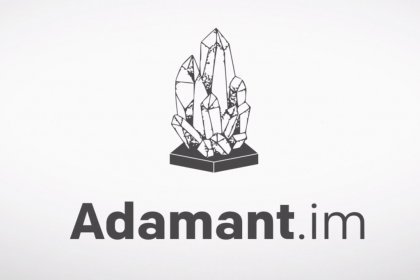Totally anonymous blockchain-based ADAMANT messenger reclaims peoples’ privacy while providing system for data and message transfers along with an integrated payments.
Messenger apps and services have become an integral part of day to day life for many people, be it an individual or a company. Unfortunately, more and more cases occur, wherein the privacy of users is breached by companies who own the application (example: instant-messengers).
ADAMANT tries to address this issue. We all know that Blockchain concepts prove to be robust in ensuring data security along with maintaining anonymity. So, ADAMANT uses a Blockchain – based system for data and message transfers along with an integrated payment system.
This means that unlike traditional centralised messaging systems, it’s almost impossible to associate a message history to a specific person – due to the absence of credentials being used in the system. Users don’t need to enter their cell phone numbers, email addresses, social accounts, or payment details anymore.
The System’s Architecture
As was previously reported by Coinspeaker, Adamant is a fully decentralized system based on the Delegated Proof-of-Stake Consensus (DPoS) algorithm. DPoS leverages the power of stakeholder approval voting to resolve consensus issues in a fair and democratic environment. All network parameters, from fee schedules to block intervals and transaction sizes, can be tuned via elected delegates.
The ADAMANT system consists of two types of nodes: Full Nodes containing the entire blockchain database, that can participate in new block forging; and Light-Clients, which run full data encryption on their side before further transferring to the blockchain.
All blockchain operations are carried out by the full nodes. The light-clients interconnect with these full nodes through the HTTPS protocol (End-to-End encryption), using a certain API to transfer all their data in JSON format.
While a full node uses the following basis:
- OS Linux Server (Ubuntu). Installation on other platforms is also possible through the Docker application packages;
- Node.JS Application Server;
- PostgreSQL Server for storing the blockchain.
While light clients make use of the following technologies:
- Progressive Web App (PWA) — a web application for the modern browsers;
- HTML5, JS, CSS, Vue — program languages and frameworks for the web;
- A full node utilisation through the special API protocol.
All of the network nodes use a Peer-to-Peer scheme over the HTTPS protocol for their interconnection.
Lisk Code for ADAMANT
Initially, a proof-of-work (PoW) system was considered for the ADAMANT project. However, PoW is not compatible in the long term with instant-messengers, as nobody would like to wait long periods of time just to send and receive messages. Also, its maintenance cost is considerably high, with the growth in participants, transaction fees would rise quickly too.
All modern use cases of the Ethereum blockchain are also not suitable for maintaining the ADAMANT network. This is because of the relatively high value of “gas” (transactions’ fee), that is used for every Ethereum transaction, including all message transfers.
The above reasons resulted in ADAMANT being built on an independent blockchain. Thus, the transactions’ costs could be low enough to operate the entire network, and could easily be adjusted based on the future rising token price. Lisk’s codebase supports these needs and hence is used for the realization of the server-part and the blockchain itself. The ADAMANT architecture is flexible enough to allow changes to transaction fees, as and when needed.
ADAMANT Transactions
Each block includes a variable amount of transactions. An amount of 6 to 10 block confirmations are needed, in order for the block to be approved. This is, however, important for token transactions and document transfers. All the messages are sent after one confirmation.
According to the project’s whitepaper, there are 10 network’s transaction types, which among others include direct token transfer, message transfer, creating a group chat, document transfer, signing a document, etc. All transactions do require commission payments (fees) for their execution. All such payments are shared between active delegates as a network maintenance cost.
Meanwhile, those interested in the project, can participate in its development through the ICO, which is live till the end of the month. ADAMANT is soft capped at $500,000, while the hard cap makes $8,000,000. All funds raised during the ICO will be used for the messenger’s development, support and evolution.
next